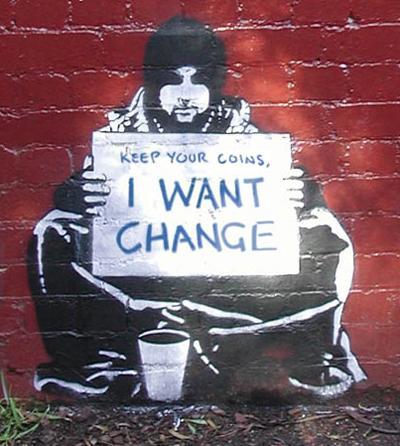However, the role of identity deserves consideration here, as psychodynamic theorists well know. Specifically, motivation to change seems to be closely tied to whether the behavior in question is ego syntonic or ego dystonic. Something that is ego syntonic is seen as an acceptable part of the ego (i.e., one's self-image, or identity), while something that is ego dystonic is seen as unacceptable to or in conflict with one's self-image.
These terms were developed by Freud, in reference to repressed material and ego defenses, but I learned them in the context of diagnosis. Specifically, I was taught that many of the personality disorders are ego-syntonic (which makes sense if they are based on personality structure), and some Axis I disorders can also be experienced as ego-syntonic, including dysthymia and anorexia nervosa. Various forms of addiction may initially be experienced as a choice, and therefore ego-syntonic, and not become ego-dystonic until well after physiological dependence has locked someone into continuing the behavior. In contrast, the majority of Axis I disorders are ego-dystonic; in other words, they are experienced as being at odds with one's identity, almost like a foreign incursion into the self. As a result, people are generally more motivated for treatment and change.
It makes sense, right? If something feels authentic to your self, you don't feel the need or desire to change it - you don't see it as a "problem," but a reality or state of being. However, if it feels like it's interfering with your true self, it's natural to want or need a solution to the problem. (Note, however, that wanting change to happen does not necessarily translate into feeling like one can or should do anything to bring about change - for example, people who are depressed universally want to feel betterm, but often feel unable to make the behavioral changes providers recommend).
Nevertheless, people enter treatment at all levels of motivation (sometimes because they want change, and other times as a result of external pressure to change) - that means that we are likely to encounter, from time to time, clients who experience the "presenting problem" as ego-syntonic. What can we do to raise these clients' awareness of the dissonance between the problem and their selves?
Two possible interventions spring to mind:
1) Externalizing conversations, a la Narrative Therapy - this therapeutic approach frames the problem as something separate from and external to the client, often by objectifying or personifying it. Then, by beginning to see it as something external, clients are helped to recognize the discrepancies between their own feelings, beliefs, goals, and values, and those the problem seems to be pursuing. For example, my clients with eating disorders can come to recognize that while they're trying to achieve perfection, their eating disorder is trying to kill them. These two goals are mutually exclusive; therefore the eating disorder begins to feel ego-dystonic.
2) Values-based action, a la ACT - while this approach does not intentionally externalize the problem, it does seek to elucidate clients' most deeply held values and goals, and encourages clients to identify and pursue goal-directed behavior that is in line with their values, irrespective of "inner experiences" (symptoms, feelings, thoughts, sensations, urges or memories). This in achieved, in part, through mindfulness and acceptance skills.
Are there other approaches you use or think might be effective with clients who experience their presenting problem as ego-syntonic?

No comments:
Post a Comment